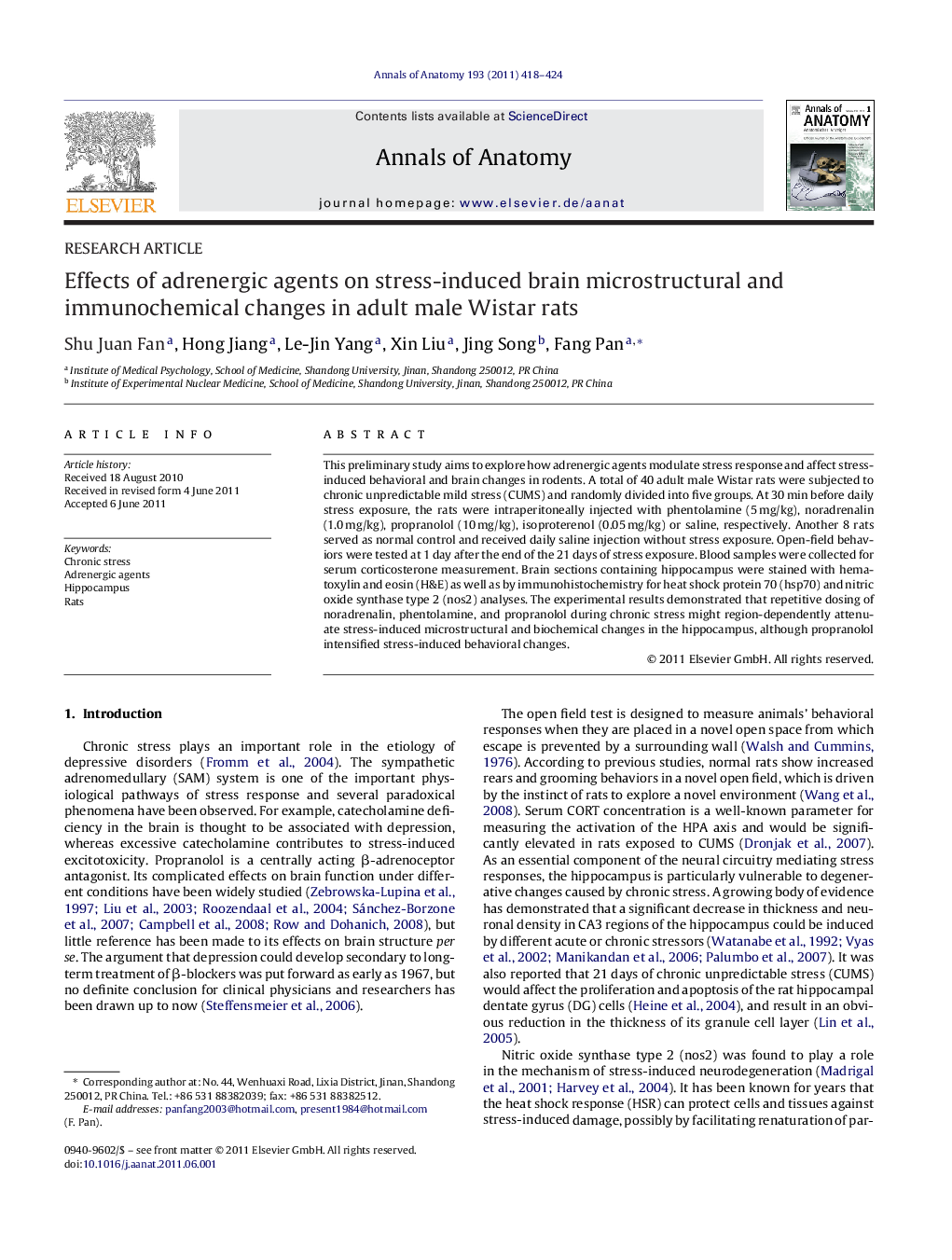| Article ID | Journal | Published Year | Pages | File Type |
|---|---|---|---|---|
| 8461954 | Annals of Anatomy - Anatomischer Anzeiger | 2011 | 7 Pages |
Abstract
This preliminary study aims to explore how adrenergic agents modulate stress response and affect stress-induced behavioral and brain changes in rodents. A total of 40 adult male Wistar rats were subjected to chronic unpredictable mild stress (CUMS) and randomly divided into five groups. At 30Â min before daily stress exposure, the rats were intraperitoneally injected with phentolamine (5Â mg/kg), noradrenalin (1.0Â mg/kg), propranolol (10Â mg/kg), isoproterenol (0.05Â mg/kg) or saline, respectively. Another 8 rats served as normal control and received daily saline injection without stress exposure. Open-field behaviors were tested at 1 day after the end of the 21 days of stress exposure. Blood samples were collected for serum corticosterone measurement. Brain sections containing hippocampus were stained with hematoxylin and eosin (H&E) as well as by immunohistochemistry for heat shock protein 70 (hsp70) and nitric oxide synthase type 2 (nos2) analyses. The experimental results demonstrated that repetitive dosing of noradrenalin, phentolamine, and propranolol during chronic stress might region-dependently attenuate stress-induced microstructural and biochemical changes in the hippocampus, although propranolol intensified stress-induced behavioral changes.
Related Topics
Life Sciences
Biochemistry, Genetics and Molecular Biology
Cell Biology
Authors
Shu Juan Fan, Hong Jiang, Le-Jin Yang, Xin Liu, Jing Song, Fang Pan,
